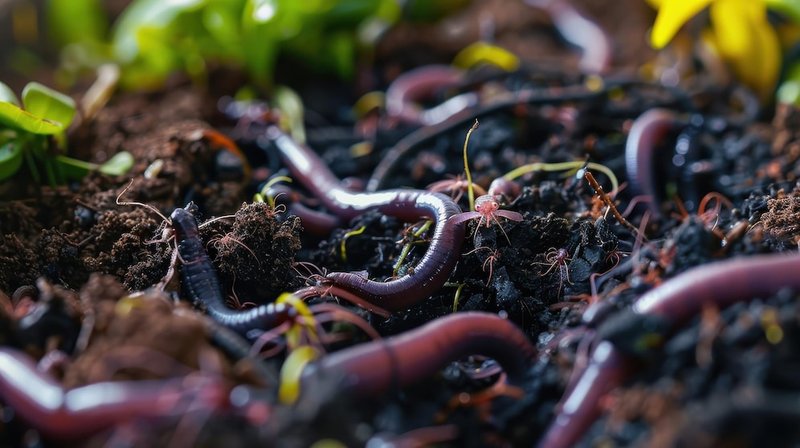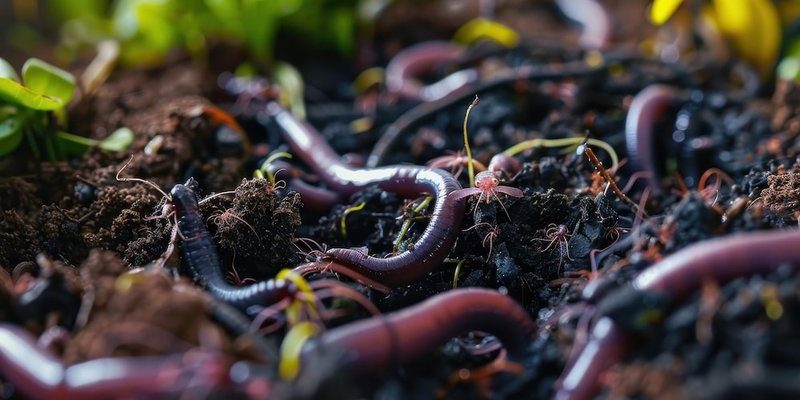
Vermicomposting is the process of using worms to break down organic waste. It’s like having a mini compost factory in your backyard, where earthworms are the hardworking employees. By munching on food scraps and other organic materials, they create a nutrient-rich product that plants just love. With more people interested in sustainable living and reducing waste, vermicomposting has become increasingly popular. So, why not learn how these amazing worms can transform your kitchen waste into garden magic?
What Is Vermicomposting?
Vermicomposting is a fancy term for composting with worms, particularly red wigglers, which are the stars of the show. These little guys are experts at breaking down organic material into nutrient-rich castings, or worm poop, which is a fantastic fertilizer for plants. The process is not only efficient but also produces less odor compared to traditional composting because worms love to munch on a wide variety of foods.
You might be wondering how it all works. Essentially, you create a worm bin where you can add your food scraps and other organic waste. As the worms feed, they digest the material and produce castings. This rich compost can be used to enhance the soil in your garden or even in potted plants. It’s like giving your plants a booster shot of nutrients! Plus, vermicomposting helps divert waste from landfills, making it an eco-friendly choice.
The Importance of Earthworms in the Ecosystem
Earthworms are often dubbed “nature’s plows.” They help aerate the soil, making it easier for plants to breathe. When earthworms burrow through the soil, they create channels that allow air and water to penetrate deeper. This aeration improves drainage, which is crucial for healthy root growth.
Moreover, the castings produced by earthworms are full of essential nutrients that plants crave. These nutrients are released slowly, ensuring that your plants have a steady supply as they grow. Earthworms also help break down organic matter, which increases soil fertility and supports a diverse range of plant life. This connection shows just how vital these little creatures are to our ecosystem.
Without earthworms, our soil wouldn’t be as rich or healthy. They play a starring role in maintaining soil structure, fertility, and overall health. It’s a classic case of “big things come in small packages.”
The Benefits of Vermicomposting
There are numerous benefits to vermicomposting, both for you and the environment. First and foremost, it’s an excellent way to manage kitchen waste. Instead of tossing scraps into the trash, you can repurpose them, reducing the amount of waste that ends up in landfills.
Beyond waste reduction, vermicomposting creates a high-quality fertilizer. Unlike store-bought fertilizers that can be harsh and chemical-laden, worm castings are gentle and beneficial for plants. They contain microbes that stimulate plant growth, enhance soil texture, and improve nutrient availability.
Additionally, vermicomposting can save you money. By producing your own compost, you won’t need to buy expensive fertilizers or soil amendments. Plus, having a thriving garden can lead to a bountiful harvest, providing you with fresh produce right from your backyard.
Setting Up Your Vermicomposting Bin
Getting started with vermicomposting isn’t as complicated as it may sound. Here’s a step-by-step guide to setting up your own worm bin:
1. **Choosing a Bin**: You can use a commercially available worm bin or make your own. Just ensure it has good ventilation and drainage holes.
2. **Gather Materials**: You’ll need bedding (like shredded newspaper or cardboard), food scraps, and, of course, worms. Red wigglers are the best choice for composting.
3. **Create Bedding**: Start by adding moist bedding to your bin. It should be damp but not soaking wet. Think of it like a damp sponge.
4. **Add Food**: Next, toss in your kitchen scraps. Avoid meat, dairy, and oily foods, as these can attract pests and smell bad. Instead, stick to vegetable peels, fruit scraps, and coffee grounds.
5. **Introduce Your Worms**: Once your bin is set up, add your worms. Give them time to adjust to their new home.
6. **Maintenance**: Check your bin regularly, and keep it damp. Stir the contents occasionally to keep air flowing. In a few months, you’ll see rich castings begin to accumulate.
Setting up a worm bin is fairly simple and can be done in a weekend. Plus, it’s a fun project for the whole family!
Common Challenges and How to Overcome Them
Even with all the benefits, you might run into a few hiccups while vermicomposting. Here are some common challenges and how to tackle them:
– **Odor Issues**: If your bin starts to smell, it could be due to overfeeding or too much moisture. Try adding more bedding and cutting back on food scraps.
– **Pests**: Fruit flies and other pests can sometimes invade your worm bin. Keep your bin covered and make sure you’re not adding foods that attract them.
– **Worm Migration**: If worms are trying to escape, it might mean they’re unhappy with their environment, possibly due to too much heat or dryness. Adjusting the conditions should help them settle down.
Dealing with these challenges can be a bit frustrating, but it’s all part of the learning curve. Vermicomposting is a rewarding experience that gets easier over time.
Using Worm Castings in Your Garden
Once you have your worm castings ready, it’s time to put them to good use. Worm castings can be used in several ways:
– **Mixing Into Soil**: Incorporate castings directly into your garden soil. They’ll help improve soil structure and fertility.
– **Top Dressing**: Spread castings on top of your garden beds as a nutrient boost. This will feed your plants as it breaks down.
– **Making Worm Tea**: You can also steep castings in water to create a nutrient-rich liquid fertilizer known as worm tea. Just mix it in a bucket, let it steep for a few days, and then use it to water your plants.
Using worm castings is one of the best things you can do for your garden. Your plants will appreciate the extra love and care!
In summary, earthworms are remarkable allies in the world of gardening and sustainability. By embracing vermicomposting, you can turn kitchen scraps into valuable resources that enrich your soil and promote healthy plant growth. Not only does this process reduce waste, but it also teaches us about the importance of recycling and nurturing our environment.
If you’re just starting out, don’t be intimidated. Vermicomposting is straightforward, and with a little patience, you’ll be on your way to creating your own sustainable composting system. So, let those earthworms do their magic, and watch your garden thrive!

